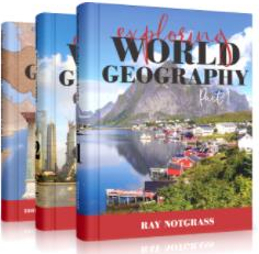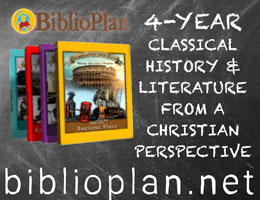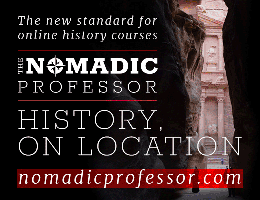Exploring World Geography is a geography, literature, and biblical worldview course for which students can earn three high school credits. This course will be a major part of the student’s curriculum for a year, requiring two and a half to three hours of work per day. This is an integrated study, so the work for the different subject areas overlaps with many assignments.
This course focuses on cultures and people more than many other geography courses. The introductory material for the course states:
This course deals with two main questions: (1) How has the physical world made a difference in what people have done, how they have lived, and how they live today? (2) How have people made a difference in the physical world, and how are they making a difference in it today? (Exploring World Geography: Part 1, p. vii).
In answering those questions, the course shows the relevance of geography to both real-life and current events. The fiction and non-fiction books students read as part of the course also work to that end. For instance, as part of their study of the Middle East, students will read Blood Brothers by Elias Chacour. Blood Brothers tells about the creation of the modern state of Israel and the displacement of the Palestinians from the point of view of the book’s Palestinian author.
The worldview component is a major part of the course. Worldview instruction includes the explanation of various worldviews (e.g., Christianity, Judaism, Islam, and atheism) and addresses major issues such as the existence of God, the nature of God, and creation vs. evolution. In this course, individual worldviews are often presented in connection with the geographical areas where they are prominent, demonstrating the relationships between what people believe and how they live. Worldviews are not presented as all being equally true and accurate, but rather in contrast to a Christian worldview. The Christian worldview presented by the course can be more specifically described as Protestant in its religious orientation and the political perspective is conservative.
The connections the course makes to current affairs and biblical principles give students a better understanding of why the material they are learning is important.
Components
The three essential course books are Exploring World Geography: Part 1, Exploring World Geography: Part 2, and Exploring World Geography: Gazeteer. The two-volume textbook includes introductory information for the student, daily assignments, course material to read, and full-color illustrations. The two-part textbook frequently uses a storytelling approach rather than just relaying information. The Gazeteer is a visually rich resource, and its maps, photo essays, and primary source documents are assigned for use in conjunction with lessons in the textbook. All three books are hardcover.
There is also a Student Review Pack that includes three smaller resources: a 20-page Guide for Parents and Answer Key, the Student Review Book, and the Quiz and Exam Book.
The Student Review Book is supposed to be optional, but it seems essential to me since it has so much content. It has a brief literary analysis for each of the literary works plus questions on the readings from the textbook, the material in the Gazeteer, and the literature. Most questions require relatively short answers, while the literary analysis questions sometimes require a paragraph or more.
The Quiz and Exam Book is also optional. Geography quizzes are included for each unit, and each of the three subject areas has an exam after every five units. The Guide for Parents and Answer Key has answers for the review book questions, quizzes, and exams.
In addition, students will need 12 other books that will be used with the various units in the course. These books are Know What You Believe, Blood Brothers, Patricia St. John Tells Her Own Story, A Long Walk to Water, The Day the World Stopped Turning, Kidnapped, Lost in the Barrens, Boys Without Names, Revolution Is Not a Dinner Party, Ann Judson: A Missionary Life for Burma, The Country of the Pointed Firs, and Tales from Silver Lands. The course is written for Protestants. This is evident in the two-part textbook as well as in books such as Know What You Believe and the Protestant missionary stories of Patricia St. John and Ann Judson.
Some of these books might be available from the library, but the publisher, Notgrass History, sells bundles with the three essential hardcover books, the Student Review Pack, and the literature. They also offer other bundle configurations.
How It Works
Exploring World Geography is a two-semester course presented in 30 units. There are five lessons per unit. Students are expected to complete most of their work independently, although they might benefit from a once-a-week group class for discussion, working on projects, and sharing completed projects.
On most days, students will read the assigned pages in the two-volume textbook, complete assignments in the Gazeteer (map work, reading historical documents, or reading photo essays), answer questions in the Student Review (if you are using it), read from one of the literature books, work on memorizing the unit’s Scripture passage, and work on a project.
The fifth lesson in each unit addresses worldviews. Taken together, these fifth-day lessons comprise a survey course in worldviews. However, worldview study is not restricted to the fifth day of each unit. One worldview question is included in most lessons. For instance, the worldview question for Lesson 9 directs students to “Complete this statement in your notebook: I am a Christian; therefore . . .” Many worldview questions for days one through four are similarly open-ended.
For literature, students will read the 12 assigned books, read the literary analysis information, answer questions, and write papers. This is a high school course that assumes students have the study and writing skills necessary to complete the work, although some help is provided within the course. Students who have limited experience writing literary analysis and essays will probably appreciate the ten pages in the Student Review Book that teach how to analyze both fiction and non-fiction. (These pages are assigned for reading in the lesson plans at the appropriate time.) In addition, tips on writing for the course’s assignments are included near the beginning of Part 1.
In addition to their other work, students will choose one project to complete for each week’s unit. Project choices at the beginning of the unit always include writing an essay on one of the two or three listed topics. (The third unit doesn't offer a choice of essay topics. Instead, it requires all students to write an essay setting forth their own worldview.) Examples of other projects are writing a short story, drawing a map, draw an illustration, researching a topic, creating a video, planning a building project, and creating something to eat from a recipe. The variety of projects provides opportunities for students with various learning styles to choose ways to demonstrate learning other than writing. However, the course instructions say that students should write an essay for at least six of the units. It is up to parents to determine if more should be required.
The course also suggests an optional research paper. The 30-week schedule for the course allows time for students to complete the research paper if parents choose to assign it. The first volume of the textbook has a 20-day schedule for researching and writing the paper along with suggested topics and research tips.
Homeschool History Supplements
Notgrass Homeschool History continually adds to their database of history-related resources that support their courses. Supplemental content for each course is available free for almost every lesson. But you can also subscribe to Homeschool History to access all their search and filtering features. There are three primary search tools: Resource, Map, and Topic. A Resource search lets you search by keyword, age range, and type of resource: audio/music, book, curriculum supplement, destination, game, hands-on, interview, printable, unit study, video, and website (with parental warnings if there is potentially problematic content). The Map search tool helps you find places around the world for both physical and virtual field trips. Topic searches let you search by regions of the world, eleven categories (e.g., culture, military, government), by alphabetical or chronological order, and by time period. As you identify resources to use from these searches, you can create your own bookmarked group of items.
Conclusion
Exploring World Geography is very different from other geography courses with its inclusion of literature and worldview instruction. This integrated approach makes the course far more interesting, but it will limit its appeal to those who want them packaged together.
Note: The complete Unit 8 (on East Africa) from the textbook is available as a free sample on the publisher’s website.











